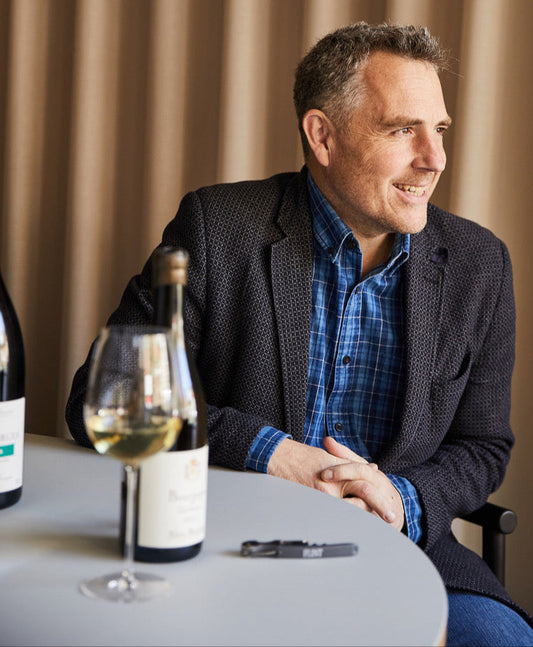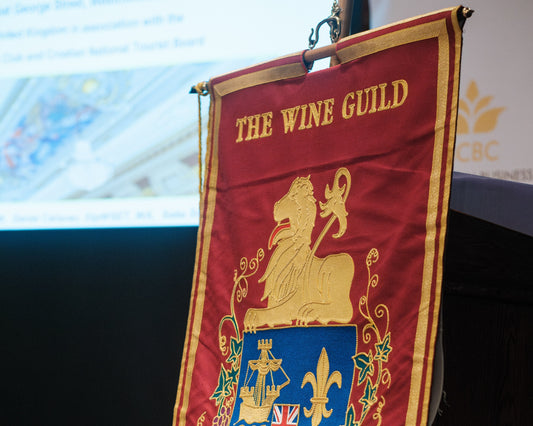How lower-intervention winemaking is making freshness, fine tannins and minerality the new taste of Spain
At about 700 metres up in the Moncayo massif in Aragón, in chilly February mist, Eduardo Ibañez is teaching me how to prune 100-year-old Garnacha vines. ‘Here, like this,’ he says, showing me where to make the cut. Ibañez is president of the Campo de Borja Denominación de Origen (DO); the grapes from this small plot and others like it will go into Tres Picos, flagship cuvée of big local producer Borsao. It’s a wine in the classic Garnacha style of north-east Spain: big, dark and powerful.

Eduardo Ibañez is teaching Andrew Neather how to prune old vines
A few weeks later in London, I’m tasting another old-vine mountain Garnacha, made from grapes grown at 850 metres in the Sierra de Gredos, west of Madrid. Yet this Los Peros 2021, made by Ca’ di Mat, is radically different from the Borsao: fresh yet powerful, with fine tannins and minerality. And it’s the latter style that is creating the buzz in Spanish wine right now.
The stylistic shift is often characterized as a contrast between ‘Atlantic’ and ‘Mediterranean’ styles – though it’s not that simple. Actual Atlantic reds from the Canary Islands and inland Galicia are certainly having a moment, while Mediterranean DOs such as Priorat remain a byword for big reds. But while Rioja and Ribera del Duero are the original home of oaky Spanish reds, they’re hardly Mediterranean.
The shift is driven in part by the growing trend towards lower-intervention winemaking – often involving organic cultivation as well as winemaking with indigenous yeasts, less use of additives and less filtering and fining. There is also a move by some Spanish producers away from heavier use of oak, as well as to lower levels of extraction.
The reds from Telmo Rodriguez’s Pegaso estate in the Sierra de Gredos are a good example. Winemaker Aitor Fernández puts the style down to the area’s poor soils, low rainfall and hot summers: ‘All this means that the Garnacha ripens with edges.’ But he also thinks there has also been a shift in consumer tastes, from ‘a preference for power, structure and high intensity’ to ‘fluidity, simplicity, subtlety and lower alcohol content’.
In Campo de Borja, a few producers are making wines in the newer style. Michael Cooper, a Californian immigrant, sources small plots of high-altitude old vines for his wines, dry farmed without pesticides. His superb Ermita Santa Barbara 2020 and Los Angeles 2020 Garnachas both major on freshness, bright acidity and herbal notes. Meanwhile Bodegas Román’s ‘Román’ 2017, Campo de Borja is richer but still fresh, with soft tannins and minimal oak.
Even in Priorat, the fresher style now has its adherents. That is part of a gradual evolution over the past decade led by winemakers such as Sara Pérez at Clos Martinet, experimenting with the use of larger barrels, concrete and clay amphorae – a radical shift from the 1990s and 2000s, when lavish use of oak was key to the area’s trademark style.
Terroir al Limit use no oak in their Priorats, matured in concrete tanks. They’re a good example of how the trend towards lower-intervention winemaking has helped drive the stylistic change. Their approach is that ‘nothing should mask the true character of the soils: not the oak, not the extraction, not the over-ripeness of the grapes’. All their wines are fascinating but the top Les Tosses cuvée, made from a 2-two-hectare plot of 90-year-old Carignan vines on black slate, is a revelation: the 2021 is dark and powerful yet elegant and mineral.
Further south, producers in the DO Valencia sub-zone of Clariano are taking an analogous approach to Monastrell. There is less local tradition to react against here: the area made only bulk wines until the start of this century. Still, Rafael Cambra says that he was trained in Rioja to see barriques as essential for serious wine: indeed, the success of Priorat in the 1990s and early 2000s was then touted as the model for boutique Spanish wines.
Yet at his own winery, he says: ‘We realized the wines don’t need new oak. You need balance to age wines, not extraction and power.’ His Uno 2020 is made from 65-year-old Monastrell vines: it’s concentrated, almost crystalline, yet fresh and balanced.
Likewise, Gabriel Sanchis, winemaker up the road at Can’ Leandro, says that when he first worked in Ribera del Duero and Priorat around 2010, the style was for much more extraction. Here in his home area, just north of Alicante province, he says that ‘there’s this mentality that Monastrell has to be bigger’. Yet his La Lloma 2022, 50/50 Monastrell and local grape Bonicaire, tastes fresh and alive. When I visited last year he told me: ‘For me, this style represents the soul of the wine better, fresher and with softer tannins.’

Roberto Oliván in Rioja
And the change in styles is coming home to Rioja and Ribera del Duero too, a trend clear at Tim Atkin MW’s recent big tastings of both regions in London (February 2024 and November 2023 respectively). Some forward-looking winemakers, such as Arturo de Miguel of Artuke in Rioja Alavesa, put it down in part to the challenges of climate change – though he also says that it’s really a return to older Rioja traditions. At Tentenublo, also in Rioja Alavesa, Roberto Oliván agrees. ‘This is how my grandparents worked the land,’ he told me when I visited last summer.
De Miguel cautions about over-emphasizing the trend: he thinks that maybe just five percent of red Riojas are made in the fresher, more fruit-forward style of his wines. What is certainly true in both Rioja and Ribera is that increasing numbers of producers are rejecting the Crianza/Reserva/Gran Reserva designations. Most don’t eschew oak completely, but they use it less than at traditional bodegas. Oliván, for example, uses concrete tanks and 500hl barrels, and the longest any of his wines spend in oak is 11 months.
In Rioja especially, there are of course very large quantities of wine being made in the familiar oak-heavy style. But the debate on Atlantic vs Mediterranean styles is having a real impact on the ground. The speed of change is exhilarating – and just one example of why Spain is arguably the most interesting wine country in Europe at present.
Andrew Neather was the London Evening Standard’s wine critic, 2005–15 and now blogs on wine and food at https://aviewfrommytable.substack.com/
First image copyright Jason Orton




